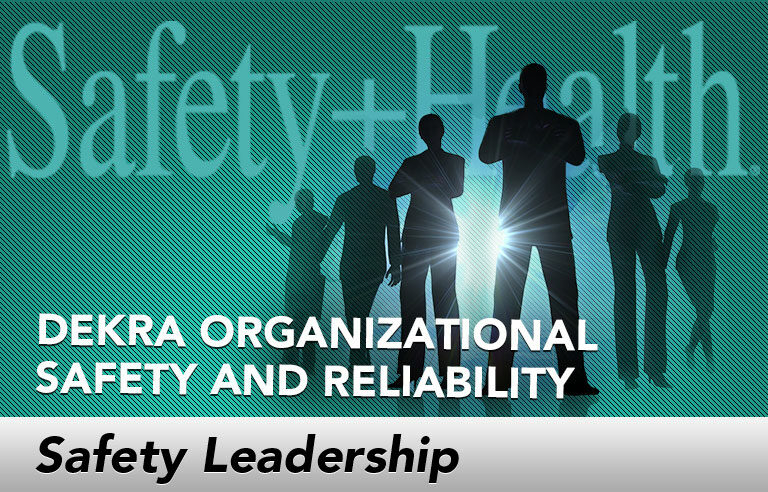Safety Leadership: Safety on the upswing

Editor’s Note: Achieving and sustaining an injury-free workplace demands strong leadership. In this monthly column, experts from global consulting firm DEKRA Insight share their point of view on what leaders need to know to guide their organizations to safety excellence.
After years of downturn and cutbacks, leaders are likely to face a different problem in the coming year: How do they keep their people safe with the comeback of oil prices?
This problem is two-edged. First, and most important, how do leaders prevent serious and fatal events while rebuilding the workforce? Second, how can leaders make safety performance a competitive advantage after years of erosive cost-cutting?
Both of these issues are made much more difficult given the pressure on costs and resources that are still being applied. Leaders who don’t get in front of the upswing and include safety in the rebuild will likely find themselves in a losing game of catchup, much like changing a tire on a car going 70 mph. This environment only further amplifies the risk of a life-altering incident.
So what should a leader do? The key is to start early and build a strategy that can expand with the growth of the business and recognizes the need to focus on both people and risk. Specifically, leaders must successfully onboard new employees while also enabling safe decision-making.
Onboard new employees for safety
New employees add life to a business. But their inexperience and lack of training can present new challenges. Some employees will come from other industries, bringing out-of-sync paradigms to the party. Many people lacking experience will be moved into leadership positions or tasked with unfamiliar jobs. People with limited training will be handling new tools for the first time and equipment will be pulled from mothballs and returned to the worksite. There will be pressure on existing systems as expansion occurs, and individuals will be strongly tempted to push themselves past safe limits to get the job done and impress superiors.
The trick to successful and safe return-to-normal operations – and managing the pace of that transition – is to use a process that doesn’t require large disruption. Leverage your existing, experienced formal and informal leaders to create an environment where being safe is the expectation. Make sure people know what that actually means and what it looks like. Most critically, create an environment that supports safe decision-making.
Teach decision-making through exposure scenarios
In high-activity, high-stress times, people are much more prone to make decisions on the fly – and those decisions have a higher likelihood of being unsafe. The same exposures that are easily identified by seasoned workers may be unclear to an inexperienced employee or entirely unseen by a new leader. Instead of relying on old methods, leverage your field leaders to run virtual encounters (or scenarios) around exposures. Scenarios improve communication about risk, reveal obstacles to making safe decisions, encourage employees to pause work, and enhance every leader’s ability to build stronger and more effective teams.
To apply scenarios in your organization, get your field leaders to identify and operationalize existing exposures – those situations created by a combination of the equipment, environment and what people do. Then, have the leaders engage new personnel and experienced personnel together in a discussion of these exposures: what they look like in the field and, most importantly, how to make safe decisions that prevent injury.
We have found that virtual encounters can be invaluable for this alignment and development work, producing dramatic increases in hazard recognition and mitigation, as well as significant cultural benefits.
The coming upswing is good news. Leaders who prepare now and develop a ramp-up process will find themselves positioned to protect their people throughout expansion, while simultaneously creating a competitive advantage moving forward. For senior leaders, staying ahead of the upswing means creating a strong culture of reliability and fostering pride at being the best in this most critical area.
This article represents the views of the author and should not be construed as a National Safety Council endorsement.
 Jim Spigener is chief client officer for DEKRA Insight. A highly sought-after speaker, Spigener advises senior leaders around the globe on safety performance. He currently is writing a book on behavior-based safety that is scheduled for publication in 2017.
Jim Spigener is chief client officer for DEKRA Insight. A highly sought-after speaker, Spigener advises senior leaders around the globe on safety performance. He currently is writing a book on behavior-based safety that is scheduled for publication in 2017.
Post a comment to this article
Safety+Health welcomes comments that promote respectful dialogue. Please stay on topic. Comments that contain personal attacks, profanity or abusive language – or those aggressively promoting products or services – will be removed. We reserve the right to determine which comments violate our comment policy. (Anonymous comments are welcome; merely skip the “name” field in the comment box. An email address is required but will not be included with your comment.)

